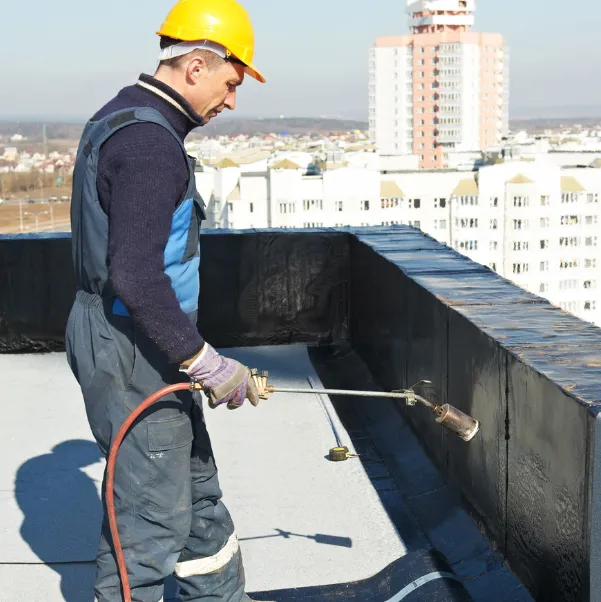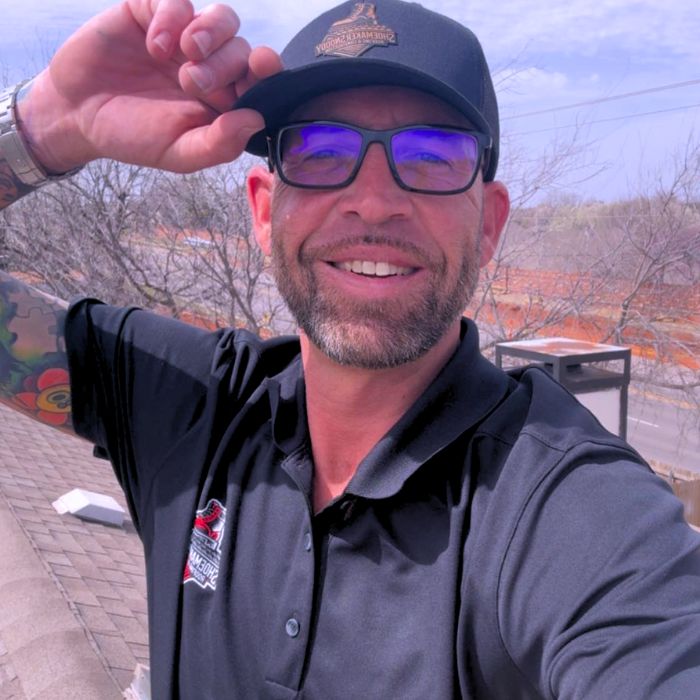Beyond Price Per Square: Vetting Commercial Roofing Contractors in Oklahoma City

When managing a commercial asset in Oklahoma City—whether it’s a sprawling retail center, a high-traffic industrial warehouse, or a multi-family apartment complex—the roof isn't just a structure; it's the primary guardian of your bottom line and operational continuity.
For commercial property owners and facility managers, the choice of a roofing partner goes far deeper than comparing quotes. You aren't just looking for an installer; you are looking for a risk manager who can guarantee a watertight system designed to withstand the brutal demands of the Oklahoma climate while ensuring minimal disruption to your tenants and operations.
This post peels back the layers on how to vet and select the top Commercial Roofing Contractors Oklahoma City has to offer, focusing on a unique, professional perspective: The Total Asset Protection Model. We will examine the critical differentiators that separate a standard roofer from a specialist committed to preserving the value, energy efficiency, and operational uptime of your commercial investment for decades to come.
The Unique Angle: The Total Asset Protection Model
The core difference between residential and commercial roofing lies in the stakes. A residential leak is a family inconvenience; a commercial leak is a catastrophic business interruption—damaged inventory, lost rental income, safety hazards, and immediate liability exposure.
The Total Asset Protection Model, which a premier firm like Shoemaker Snoddy champions, dictates that the roof must be treated as a high-value piece of operational machinery, not just a covering. This requires commercial roofing partners to excel in three distinct areas:
Engineered Resilience: Designing systems specifically for Oklahoma's severe weather (hail, high winds, and thermal shock).
Operational Accountability: Executing projects with rigorous safety protocols and phased schedules to maintain business continuity.
Financial Foresight: Leveraging preventative maintenance and specialized warranties to control long-term operating costs.
If a potential partner among Commercial Roofing Contractors Oklahoma City cannot demonstrate mastery in these three pillars, they are simply selling a product, not a true asset protection service.
Pillar 1: Engineered Resilience for Oklahoma’s Climate
Commercial flat and low-slope roofs have inherent vulnerabilities that are exacerbated by the OKC environment. The system chosen must be designed to mitigate these specific, local risks.

A. Material Science vs. Material Cost
The modern commercial market offers four primary roofing systems: TPO, EPDM, PVC, and Modified Bitumen. Your contractor must be an expert in selecting the optimal system based on your facility's use (e.g., grease resistance for restaurants, puncture resistance for high-traffic decks).
TPO and PVC Membranes: These are dominant options. However, due to Oklahoma's severe thermal cycling (from 100+ degrees in summer to below freezing in winter), your contractor must ensure the membrane is thick enough (80-mil is often superior to 45-mil for longevity) and that all seams are meticulously hot-air welded with precision equipment. Seam failure is the number one cause of flat roof leakage, and only the best Commercial Roofing Contractors Oklahoma City invest in the training and equipment required for flawless welding.
Insulation and R-Value: In a commercial setting, the roof system provides a vast majority of the building’s thermal resistance. A high-quality installation demands the correct thickness and type of insulation (e.g., polyisocyanurate) to achieve a high R-value. This directly affects HVAC performance and dramatically reduces annual energy consumption, offering a fast return on investment. The contractor should provide a detailed document showing the R-value calculation for the proposed system.
B. High-Wind and Hail Defense
Unlike residential roofs, flat commercial roofs face wind uplift and hail impact across a large, continuous surface.
Secure Fastening Patterns: For mechanically fastened systems, the spacing and layout of fasteners must be engineered to resist high wind forces, especially at the perimeter and corners where uplift pressure is greatest. This is determined by a certified wind-load calculation—a step often skipped by lesser Commercial Roofing Contractors Oklahoma City.
Drainage Integrity: Ponding water—water that sits for 48 hours or more—is the enemy of a commercial roof. Your contractor must identify and correct poor drainage with tapered insulation systems or by installing crickets and saddles to direct water to the appropriate drains. This small detail prevents rapid material degradation and the overloading of structural components. They should include a diagram illustrating the drainage plan in their proposal.
Deck Integrity Assessment: Commercial decking (often metal or concrete) can suffer damage that is hidden until the old membrane is removed. A thorough contractor includes a procedure for non-destructive inspection before installation and a documented process for repairing or reinforcing the decking structure itself.
Pillar 2: Operational Accountability and Uptime Guarantee
A commercial roof project cannot shut down your business. Therefore, vetting a contractor requires scrutinizing their process and their commitment to safety and scheduling.

C. Project Phasing and Logistics
The best Commercial Roofing Contractors in Oklahoma City understand that their job is to be invisible. They specialize in phased installations, which involves completing small sections of the roof, tying them into the existing system, and achieving "dried-in" status daily. This minimizes the open deck area and virtually eliminates the risk of water penetration during an unexpected Oklahoma downpour.
Key questions to ask your prospective contractor include:
"How will you manage material staging to avoid disrupting tenant parking or delivery access?"
"What is your nightly protocol for securing the job site and protecting any open sections of the roof deck? We need a written description of the nightly tie-in process."
"What specific steps are taken to minimize noise and dust for our tenants or customers?"
D. Safety and Compliance (OSHA & Local Codes)
Commercial roofing inherently involves greater risk due to height, heavy equipment, and potential chemical exposure. A failure to comply with safety standards is a direct liability to the property owner.
Safety Program Evidence: Demand proof of a rigorous safety program, including safety logs, regular toolbox talks, and a low EMR (Experience Modification Rate). A lower EMR is direct evidence that they prioritize the safety of their crews and your property, which shields your liability.
Permitting and Inspections: A trustworthy firm handles all necessary city permits and schedules mandatory local inspections for mechanical fasteners, insulation, and final installation, guaranteeing your new roof is 100% compliant with Oklahoma City commercial building codes. They should provide a record of the final city inspection and sign-off upon completion.
Crew Structure: Confirm whether the installation crew is comprised of employed, in-house specialists or transient subcontractors. Employed crews typically have a higher level of training consistency and accountability, which is essential for complex commercial systems.
Pillar 3: Financial Foresight and Long-Term Cost Control
The true value of a premium roof is realized over its 20 to 30-year lifecycle, not on day one. A strategic partnership with Commercial Roofing Contractors, Oklahoma City, is a way to budget and control future CapEx (Capital Expenditures) and OpEx (Operating Expenses).
E. The Power of Preventive Maintenance
The most cost-effective roofing dollar is the one spent on maintenance. A proactive maintenance contract typically includes:
Bi-Annual Inspections: Checking for punctures, split seams, blocked drains, and deterioration caused by rooftop unit (HVAC) service personnel.
Warranty Maintenance: Most leading manufacturers require documentation of regular maintenance to keep their premium warranties valid. A professional contractor manages this paperwork and provides you with a detailed report and log after every inspection. This simple, recurring service extends the roof's life by years and is crucial for asset preservation.
Coatings and Restoration: For older roofs in decent structural condition, a contractor focused on foresight will propose a high-performance roof coating to restore and extend the roof's life, deferring a full replacement for many years. This is a crucial cost-saving option that demonstrates a commitment to the owner's budget.
F. The Full System Warranty (Beyond the Paper)
A commercial warranty is complex. You need a contractor who can offer not just the standard material warranty, but a true No-Dollar-Limit (NDL) system warranty backed by the manufacturer.
An NDL warranty covers both materials and the contractor's workmanship, ensuring that if a defect or installation error occurs, the manufacturer—not the local contractor—covers the entire cost of repair or replacement, often for 15-20 years. Only a select few, certified Commercial Roofing Contractors Oklahoma City, qualify to offer these high-level NDL warranties.
Ask for a side-by-side comparison document that clearly outlines the coverage limits, exclusions, and duration of the standard warranty versus the enhanced NDL warranty they can offer.
Your Vetting Checklist: Questions That Demand Expertise

Before you sign a contract for your next commercial roofing project, use these questions to gauge your candidate’s commitment to the Total Asset Protection Model:
"Can you provide a wind uplift calculation and explain how your fastening pattern will exceed our local code requirements?" (Tests their Engineered Resilience expertise).
"What is your EMR rating, and what specific steps will you take nightly to secure the deck and prevent water penetration during a sudden storm? We require a formal safety plan document." (Tests their Operational Accountability).
"Are you certified to offer the manufacturer's No-Dollar-Limit (NDL) warranty, and can you show me three examples of commercial properties you maintain under a service agreement?" (Tests their Financial Foresight and long-term commitment).
"How will you manage and dispose of the existing roofing material (tear-off), ensuring minimal impact on our dumpster availability or traffic flow? Provide a logistical plan diagram." (Tests their logistical planning).
"What is your documented response time for an emergency leak during a business day?" (Tests their dedication to operational continuity).
The Final, Critical Distinction: The Local Partner
In commercial roofing, you need stability. Out-of-state "storm chasers" often subcontract labor and vanish once the check is cashed, making any warranty claim a nightmare. A reputable, local firm among Commercial Roofing Contractors in Oklahoma City has invested in the community, employs local, trained talent, and has a physical office. Their reputation—their legacy—is built on the long-term performance of their roofs on local assets. This local accountability is the ultimate assurance for a commercial property owner.
Choosing a partner for Commercial Roofing Contractors Oklahoma City is fundamentally about mitigating risk. By focusing on contractors who embody the principles of Engineered Resilience, Operational Accountability, and Financial Foresight, you move beyond the transaction and into a long-term partnership that protects your investment, your tenants, and your bottom line for decades.
Ready for a New Roof (or just a Check-up)? Start Here!
Simply fill out the form to book your professional roof check-up and detailed quote.
